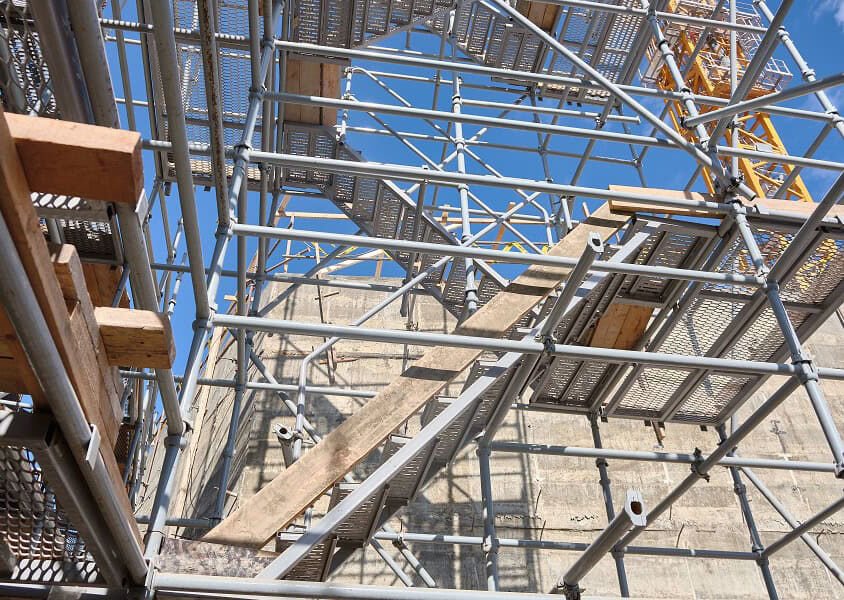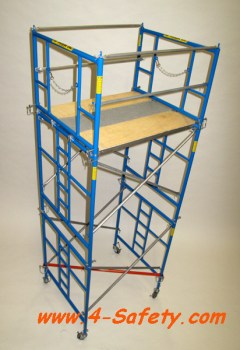Residential Scaffolding Solutions for Safe and Efficient Home Improvements
Residential Scaffolding Solutions for Safe and Efficient Home Improvements
Blog Article
A Comprehensive Guide to the Necessary Functions of Scaffolding in Modern Building
The landscape of modern-day building progressively counts on effective scaffolding systems that focus on effectiveness, safety and security, and advancement. As tasks grow in intricacy, comprehending the necessary functions of scaffolding ends up being important for making certain worker safety and enhancing task timelines. This guide checks out various kinds of scaffolding, highlights key safety functions, and examines product advancements that add to performance and sustainability. Nonetheless, the effects of these components extend far past simple building methods, prompting a closer check out how they influence overall job success and employee health.
Kinds Of Scaffolding
Although scaffolding systems can vary widely in layout and application, they usually come under numerous distinctive groups that provide to various construction requirements - Scaffolding. The most common types consist of supported scaffolding, put on hold scaffolding, and rolling scaffolding
Sustained scaffolding includes platforms supported by a framework of poles, which supply a steady and elevated functioning surface area. This type is commonly made use of for tasks that call for significant altitude, such as bricklaying or external paint.
Put on hold scaffolding, alternatively, is used for jobs needing access to high elevations, such as cleansing or repairing building facades. This system hangs from an additional structure or a roof, allowing employees to lower or raise the system as required.
Rolling scaffolding functions wheels that permit easy movement across a work website. It is specifically helpful for jobs that need regular moving, such as interior work in huge rooms.
Each type of scaffolding is designed with specific applications in mind, making sure that construction jobs can be executed efficiently and efficiently. Understanding these groups is crucial for picking the proper scaffolding system to meet both job demands and website conditions.
Key Safety And Security Attributes
Safety is critical in scaffolding systems, as the possible dangers related to working at elevations can lead to significant crashes if not effectively handled. Key security features are vital to guarantee the well-being of employees and the honesty of the construction website.
Primarily, guardrails are critical. These obstacles provide a physical secure versus drops, significantly decreasing the risk of significant injuries. Furthermore, toe boards are commonly used to stop tools and materials from falling off the scaffold, securing employees below.
One more important element is making use of non-slip surface areas on platforms. This feature enhances grip, specifically in adverse weather condition problems, thereby reducing the probability of falls and slides. Moreover, accessibility ladders should be firmly positioned to facilitate risk-free access and departure from the scaffold.
Routine examinations and maintenance of scaffolding systems are additionally essential. These assessments make sure that all components are in great condition and operating appropriately, attending to any wear or damages quickly.
Last but not least, proper training for all workers associated with scaffolding procedures is vital to guarantee that they recognize safety protocols and can recognize prospective hazards. Scaffolding. Jointly, these functions create a safer working environment and significantly mitigate risks connected with scaffolding
Product Developments
Developments in material scientific research have actually significantly affected the scaffolding market, enhancing both security and effectiveness in modern construction. The introduction of high-strength steel and aluminum alloys has revolutionized typical scaffolding systems.
Furthermore, ingenious composite products, such as fiberglass-reinforced plastics, have become sensible alternatives. These materials are immune to deterioration and ecological deterioration, therefore extending the life-span of scaffolding systems, specifically in severe weather conditions. The use of such materials contributes to lower maintenance expenses and makes certain constant efficiency with time.


Style Factors To Consider
Taking into consideration the intricacies of modern building tasks, effective scaffolding design is paramount to guaranteeing both performance and safety. Design factors to consider should encompass numerous variables, consisting of tons capacity, elevation, and the details requirements of the building website. Each project offers special obstacles, necessitating an adaptable strategy to scaffolding systems that can adjust to varying conditions.
Structural integrity is essential; for that reason, designers have to calculate the loads that the scaffolding will certainly support, consisting of employees, products, and devices. The selection of products plays a crucial duty in ensuring the scaffolding can hold up against these loads while staying light-weight and durable. Additionally, the design needs to enable very easy gain access to and egress, helping with the smooth movement of personnel and products.
Safety features, such as guardrails and non-slip surface areas, ought to be included to lessen risks of mishaps. The layout has to consider the surrounding setting, including potential risks and adjacent frameworks. By addressing these design considerations, building companies can enhance the effectiveness of scaffolding systems and advertise a more secure working setting, inevitably contributing to the general success of the project.
Maintenance and Assessments
The efficiency of scaffolding systems prolongs beyond first layout and execution; recurring maintenance and routine assessments are crucial to ensuring their proceeded efficiency and security throughout the period of a job. Normal assessments need to be conducted by certified workers to identify any kind of signs of wear, damage, or instability that can jeopardize the honesty of the scaffolding.
Upkeep methods need to consist of routine checks of architectural parts, such as installations, planks, and frames, ensuring that all aspects continue to be cost-free and safe and secure from corrosion or other wear and tear. Additionally, the functionality of safety and security attributes, such This Site as guardrails and toe boards, have to be examined to make sure compliance with safety guidelines.
Paperwork of all assessments and maintenance tasks is essential for responsibility and regulative conformity. A methodical approach to record-keeping not just aids in tracking the condition of the scaffolding yet also gives required evidence in case of an incident.
Inevitably, developing an extensive maintenance and examination timetable will considerably decrease the threat of crashes and boost the overall safety and security of the building and construction site. By prioritizing these techniques, construction supervisors can secure employees and copyright the project's honesty.

Verdict
In final thought, the important functions of scaffolding in contemporary construction encompass a series scaffolding apprenticeships of vital aspects, consisting of diverse kinds, key safety devices, material technologies, and thoughtful design considerations. Stressing safety via guardrails and non-slip surface areas, alongside advancements in products like high-strength steel, enhances both efficiency and sustainability. Regular maintenance and examinations are essential for making sure architectural stability and safety on building and construction sites, ultimately facilitating effective job execution and advertising the wellness of employees.
The landscape of modern building and construction increasingly depends on effective scaffolding systems that focus on safety, innovation, and efficiency.Developments in material scientific research have dramatically affected the scaffolding sector, enhancing both security and effectiveness in modern building and construction. Overall, these material advancements not only enhance the performance and safety and security of scaffolding systems however likewise straighten with the sector's push towards sustainability, as lots of contemporary materials are made to be much more ecologically friendly.
Thinking about the complexities of modern-day building and construction projects, effective scaffolding design is vital to guaranteeing both functionality and safety and security.In conclusion, the vital features of scaffolding in contemporary building and construction include a variety of crucial elements, consisting of varied types, crucial security devices, material developments, and thoughtful design factors to consider.
Report this page